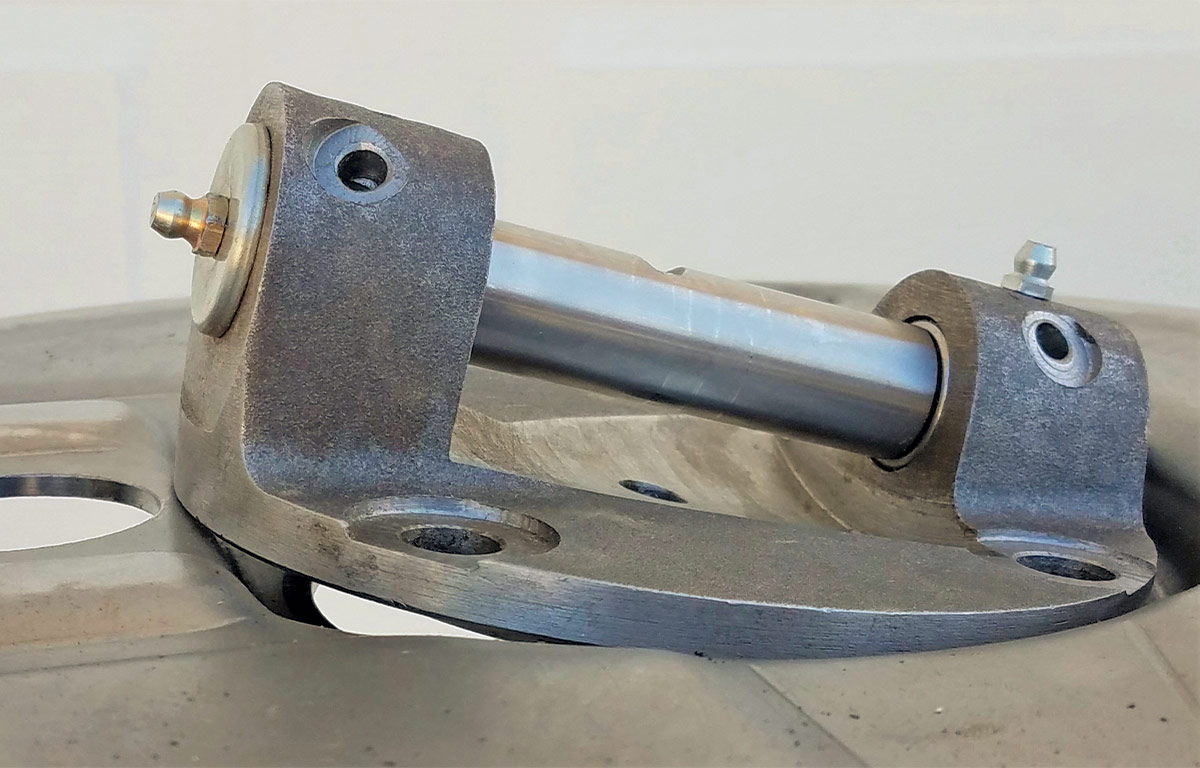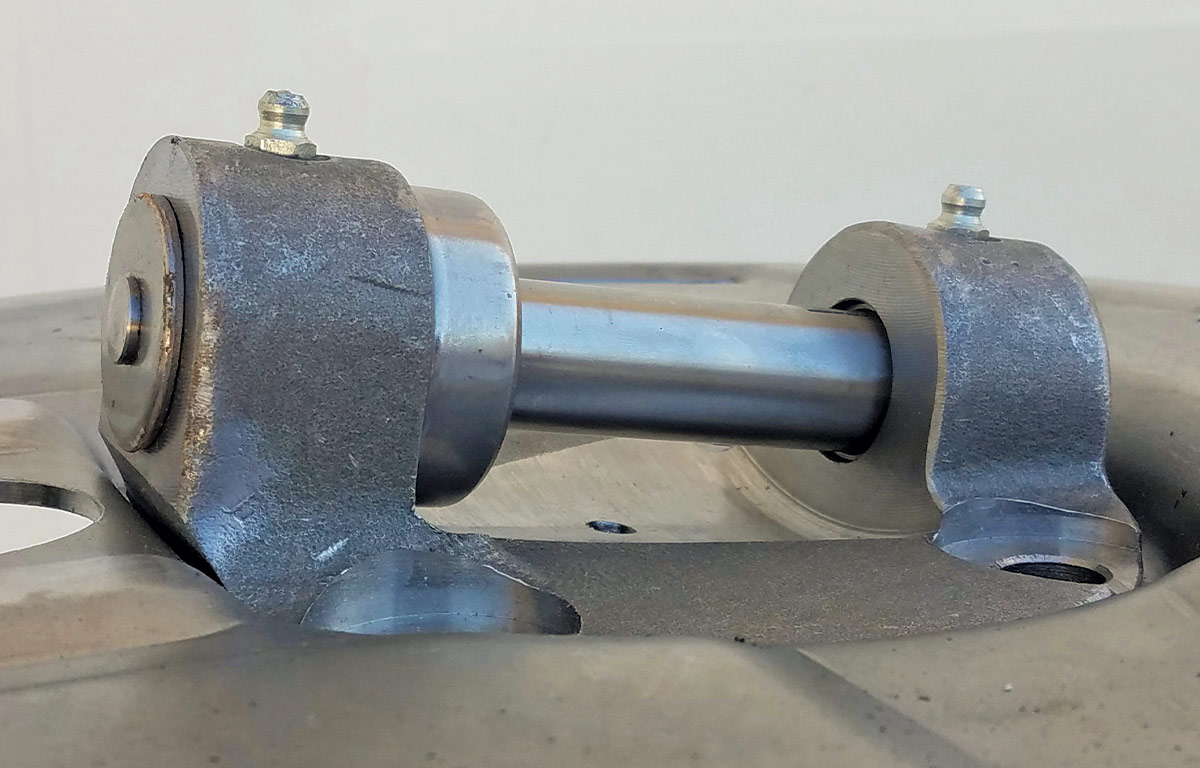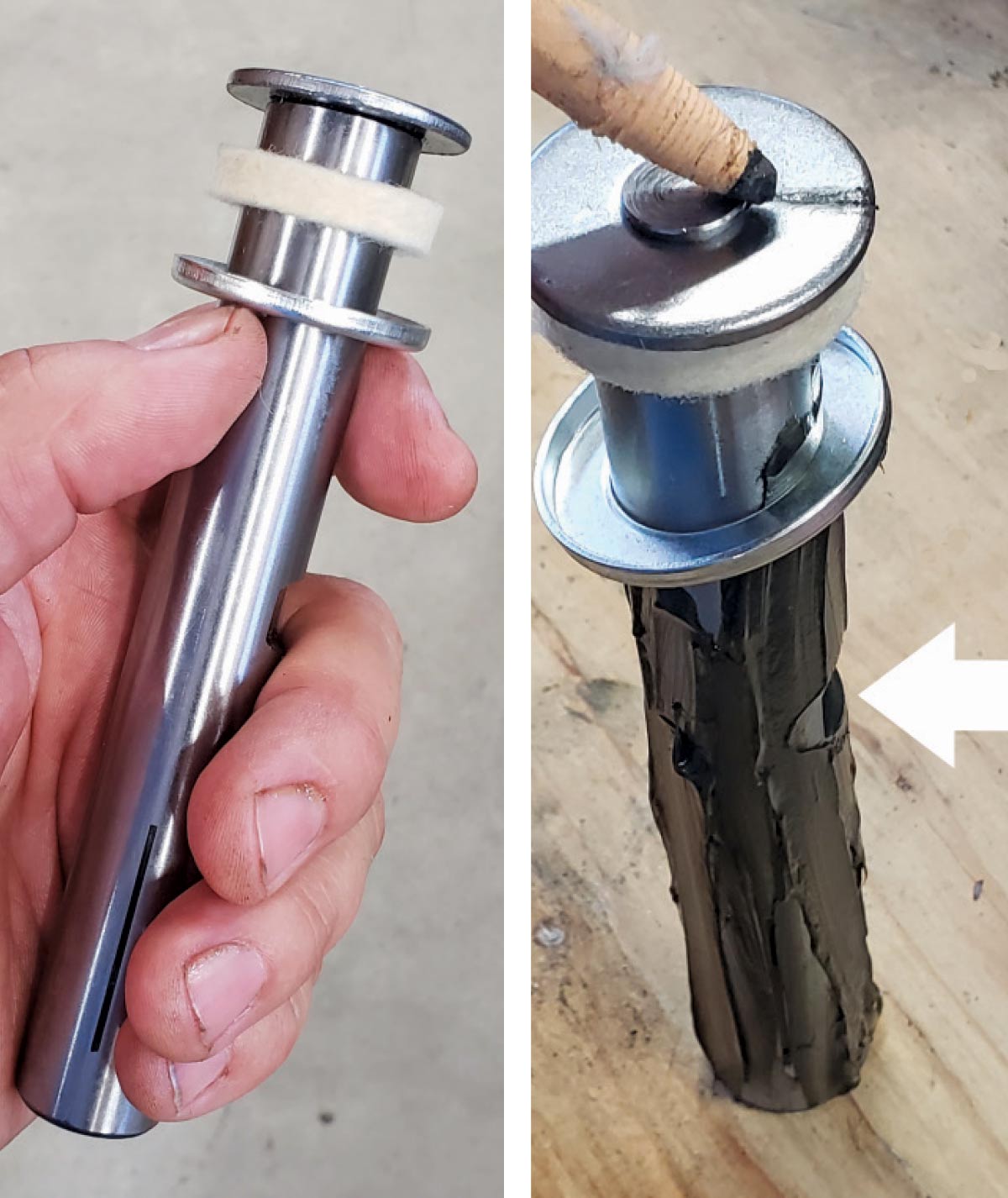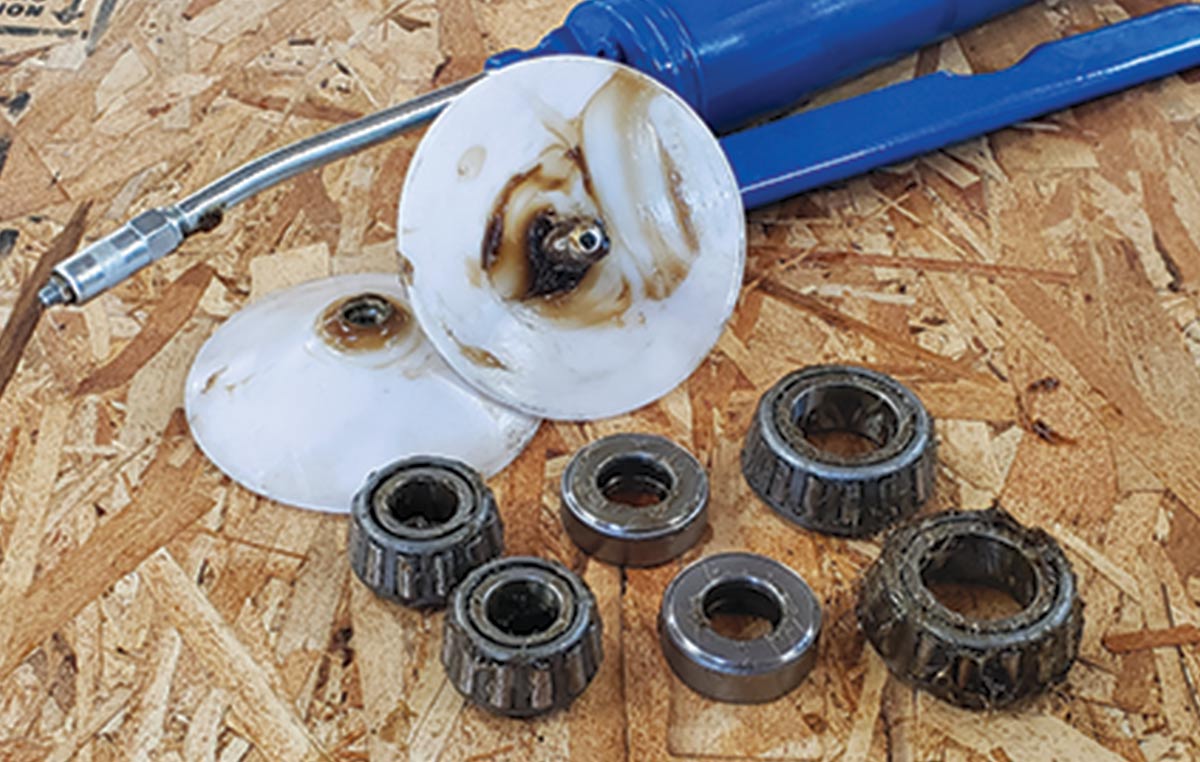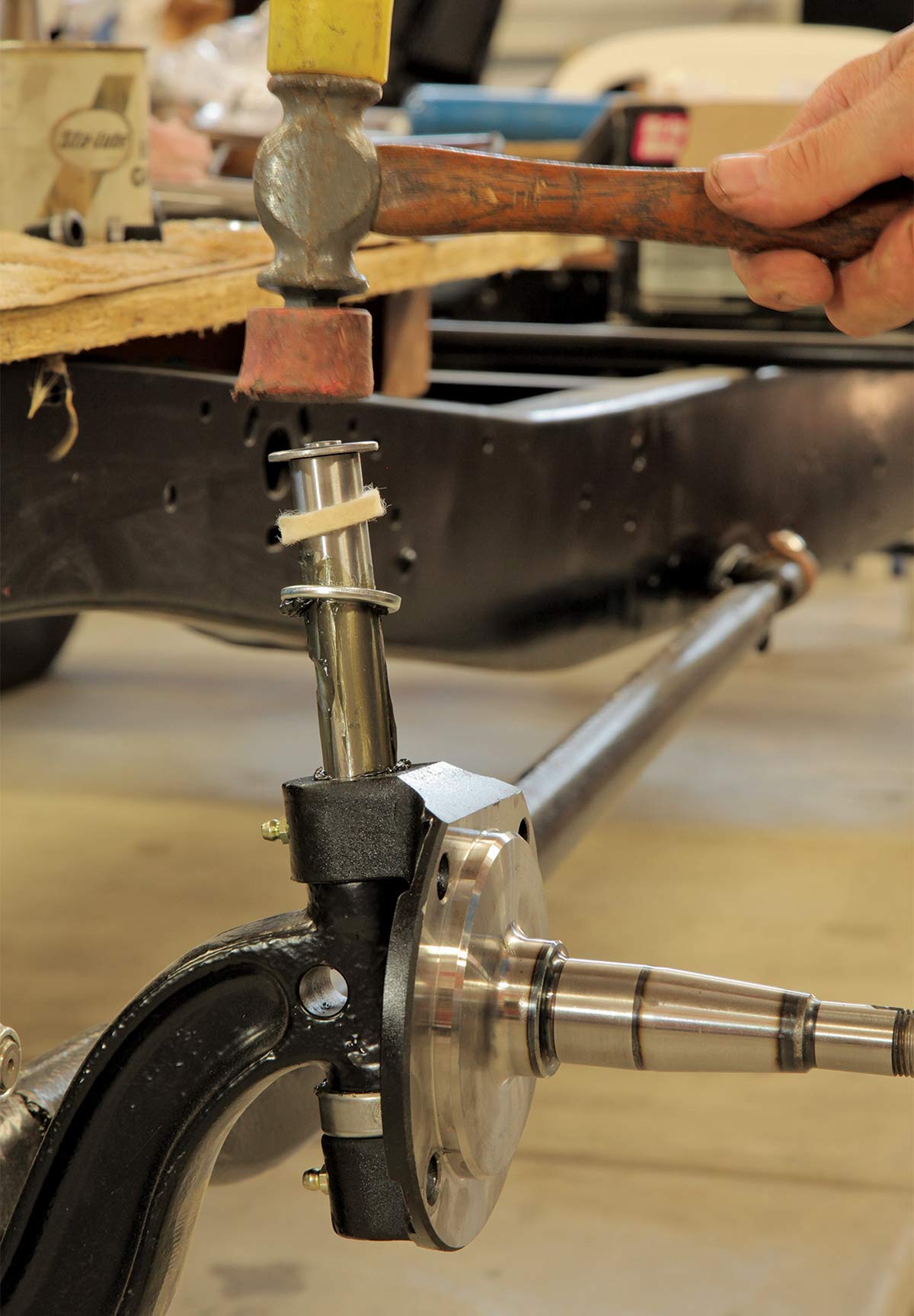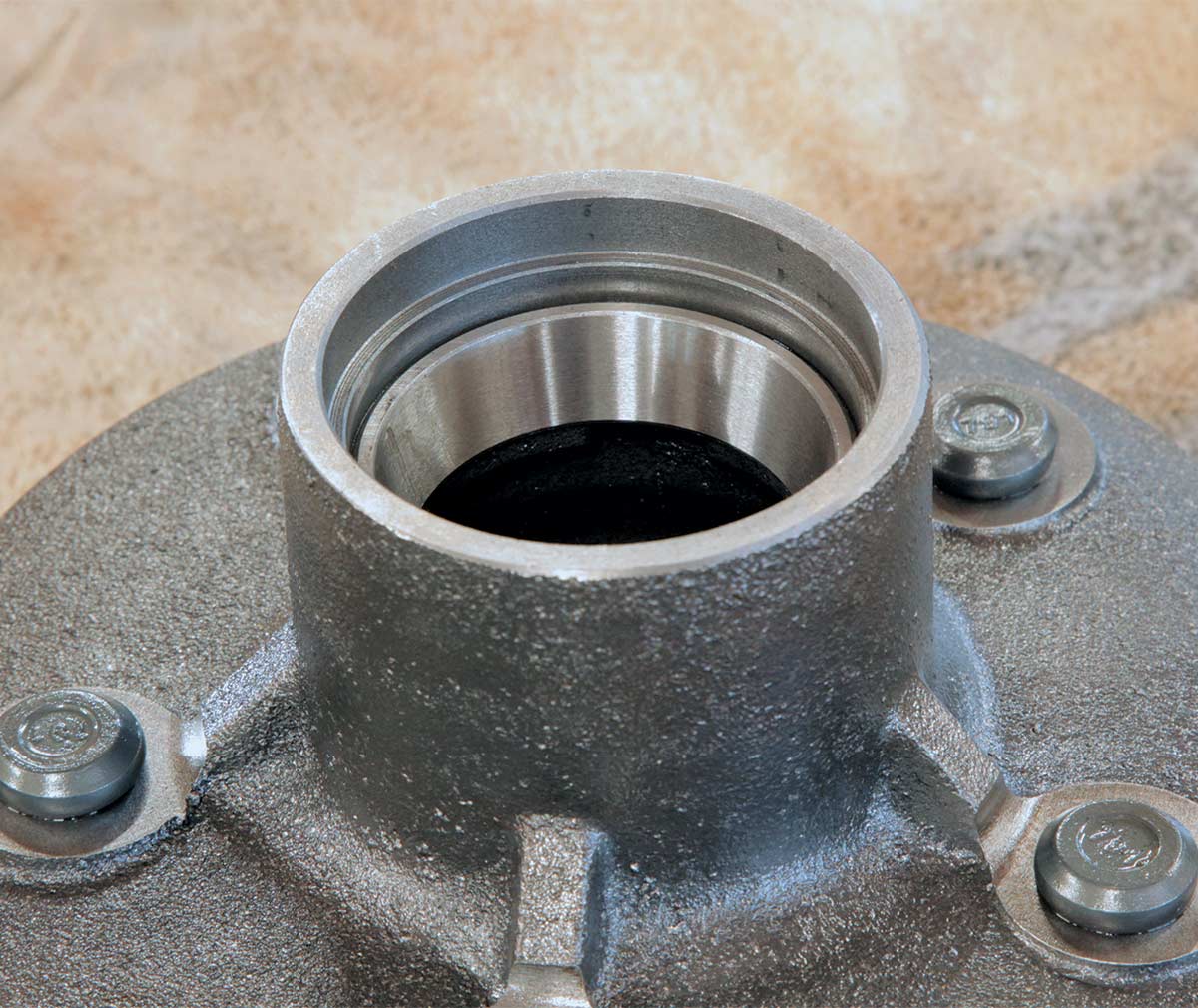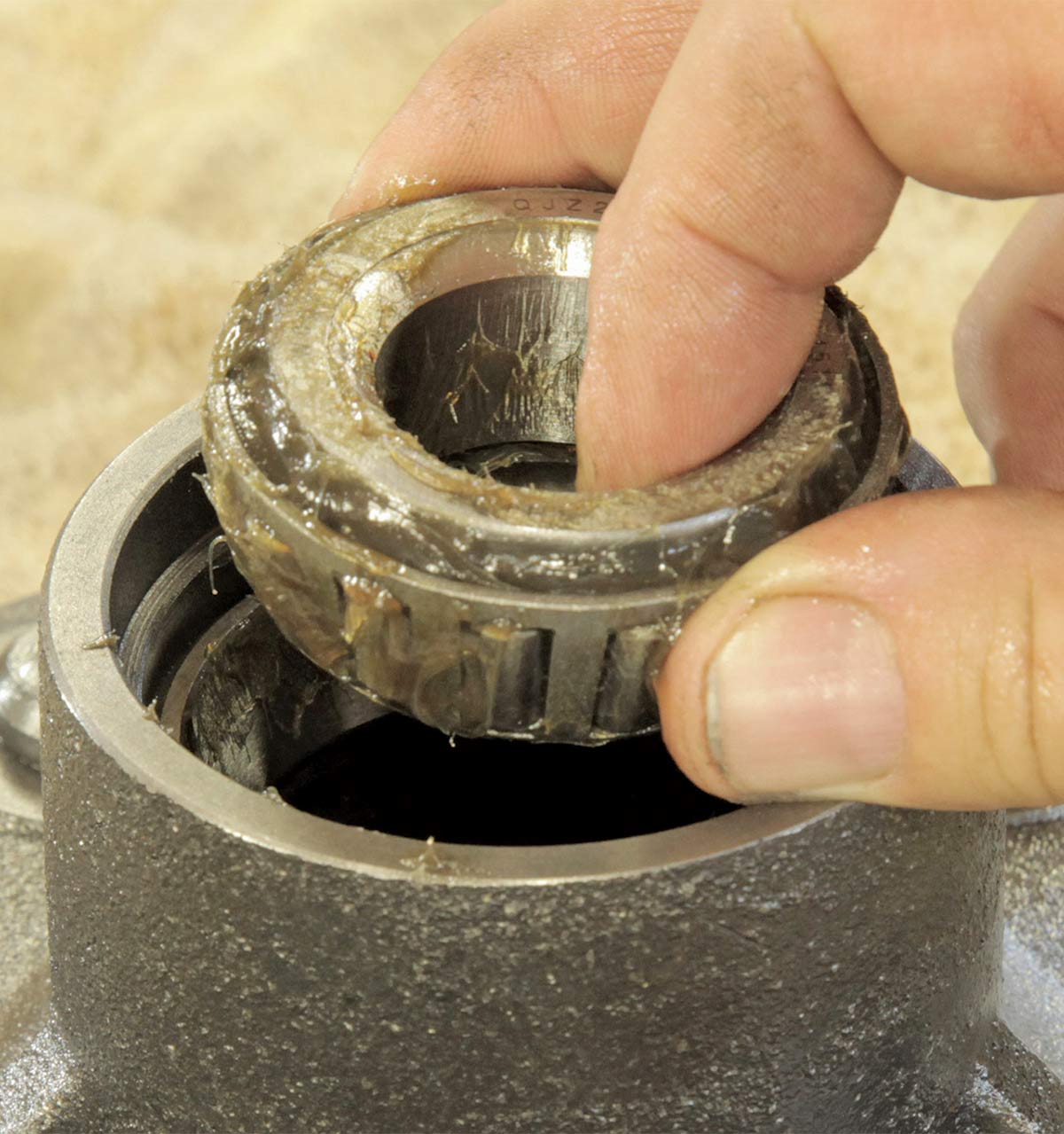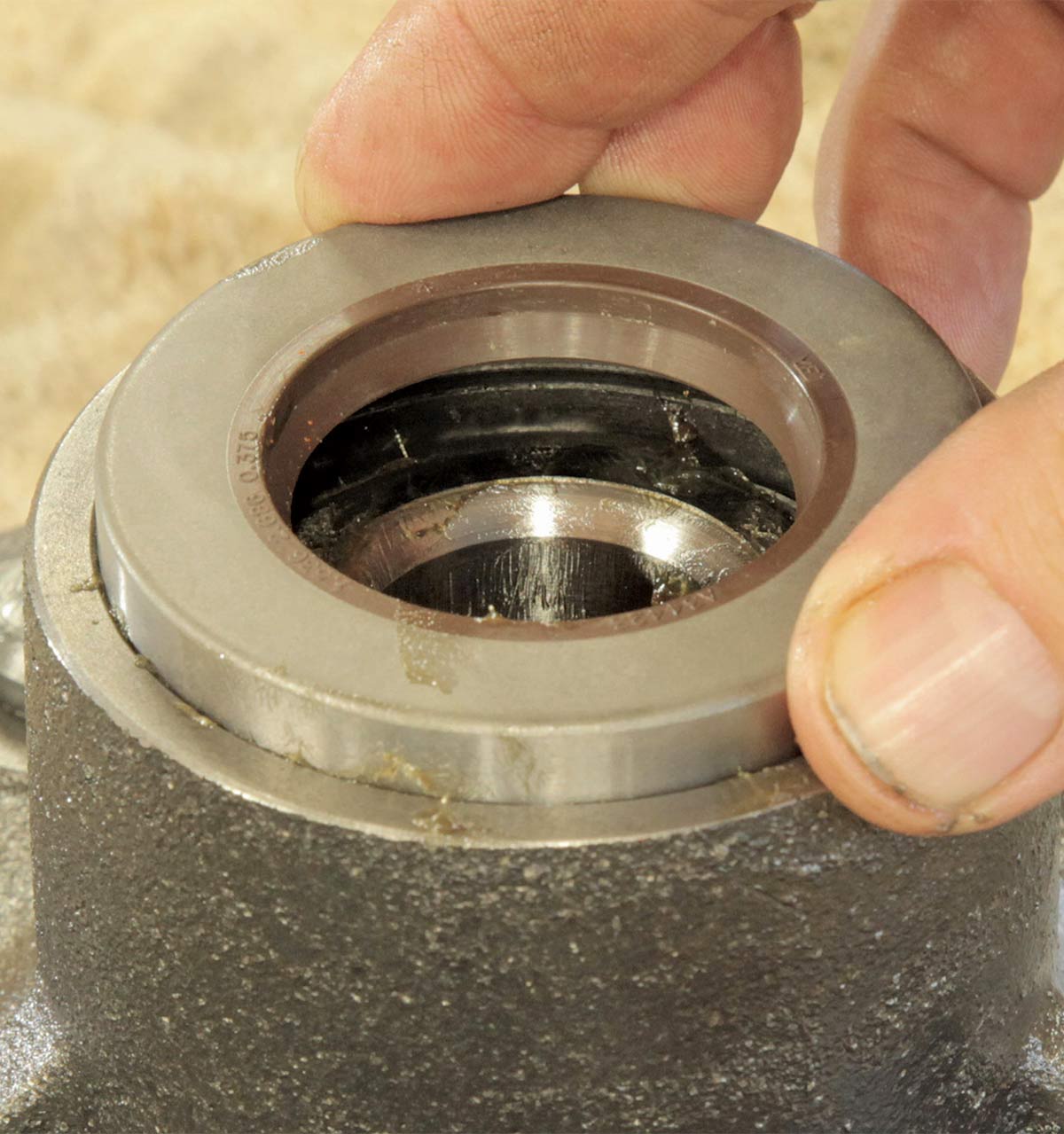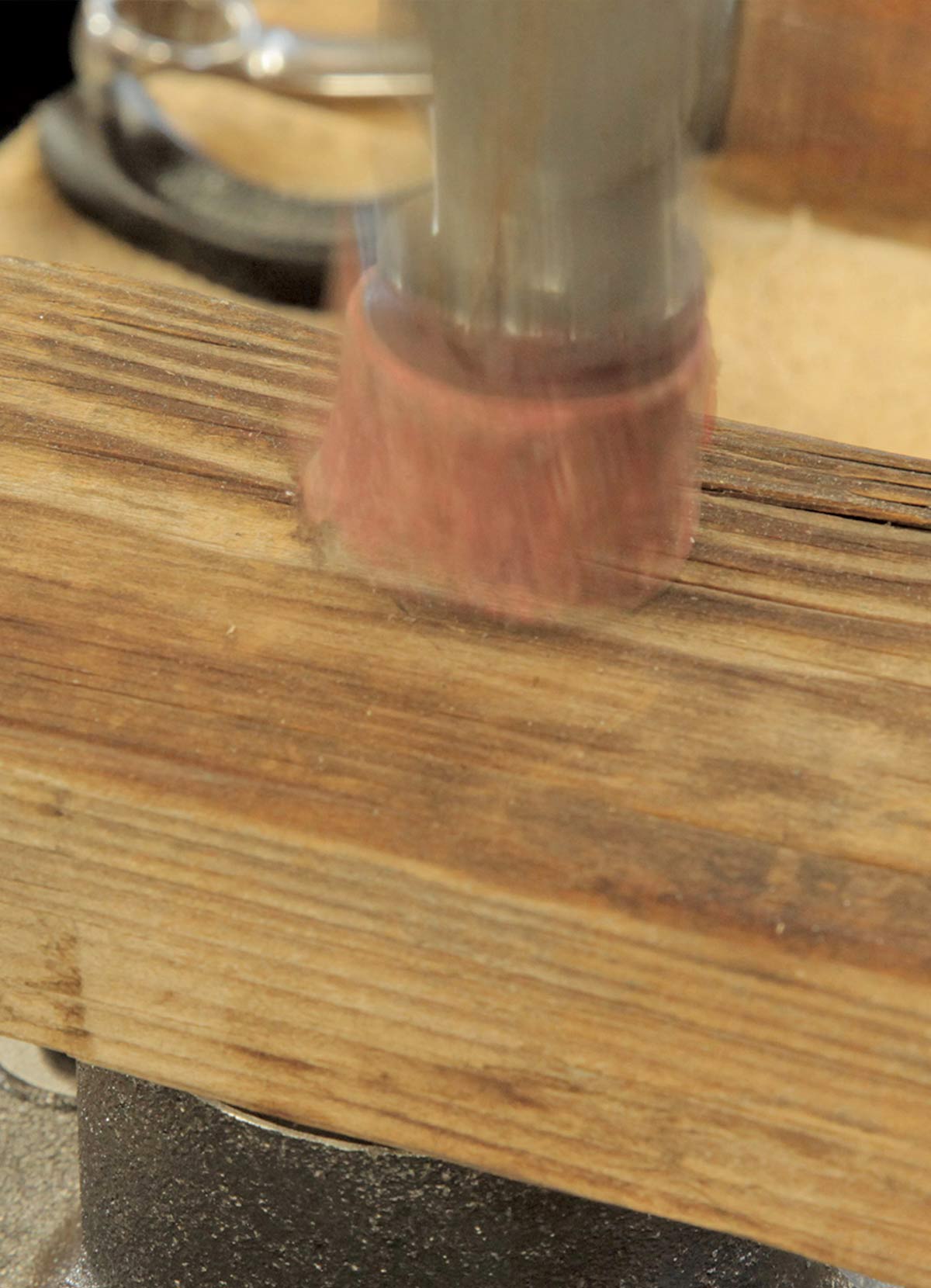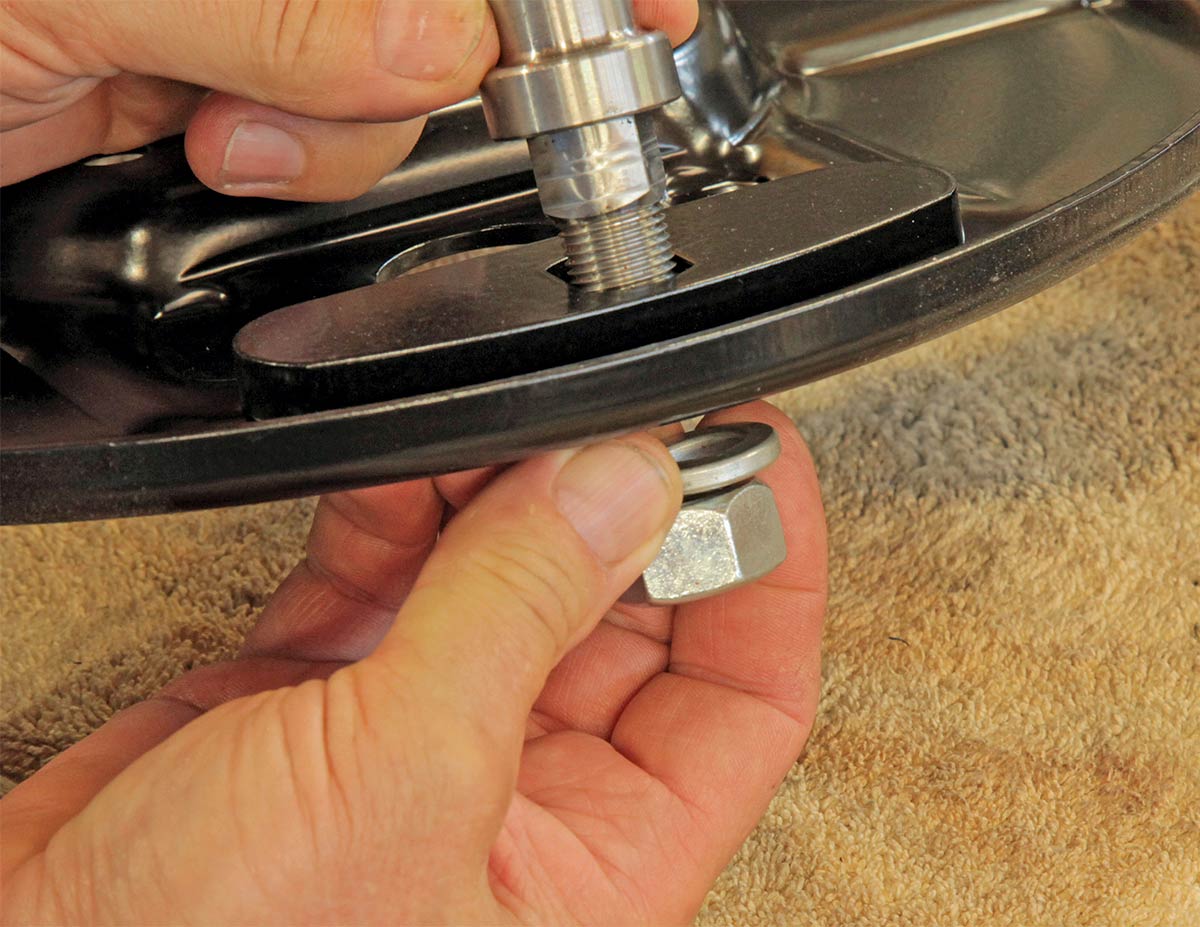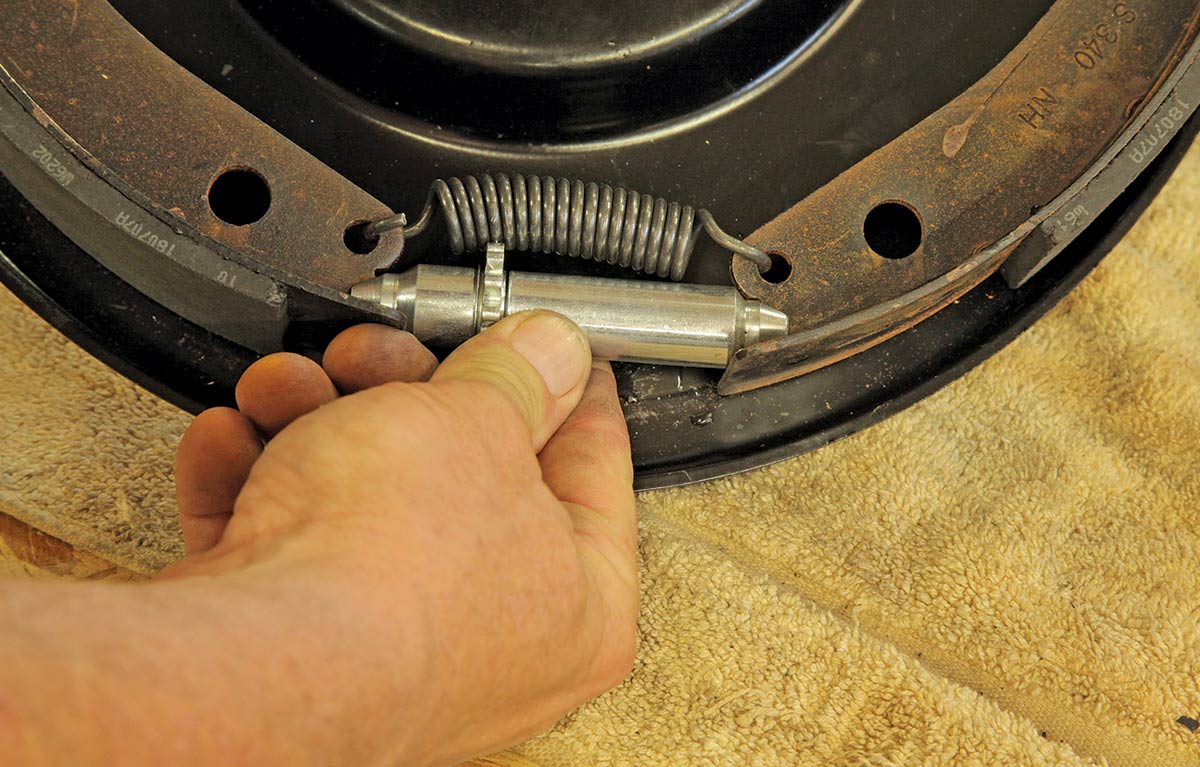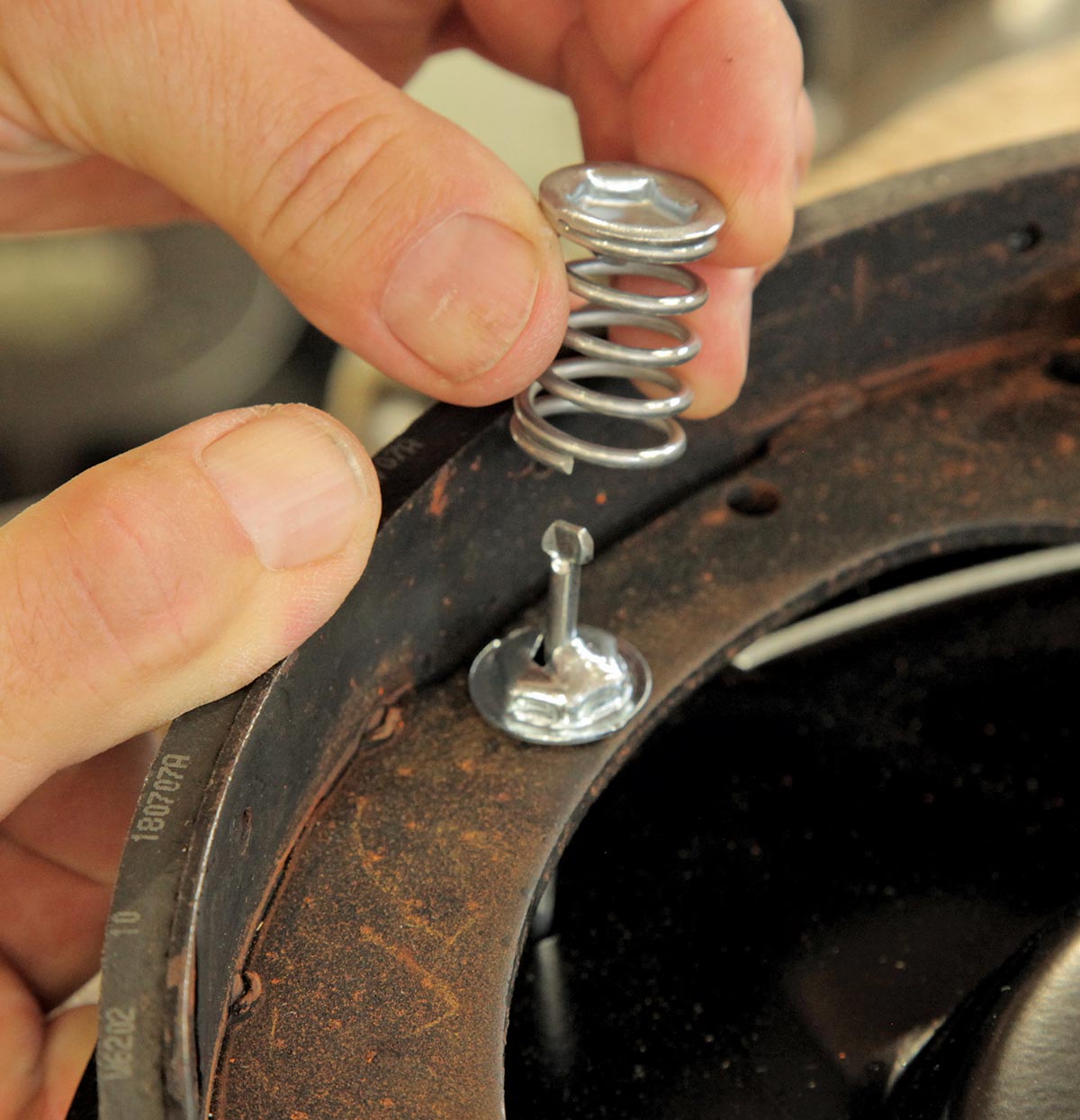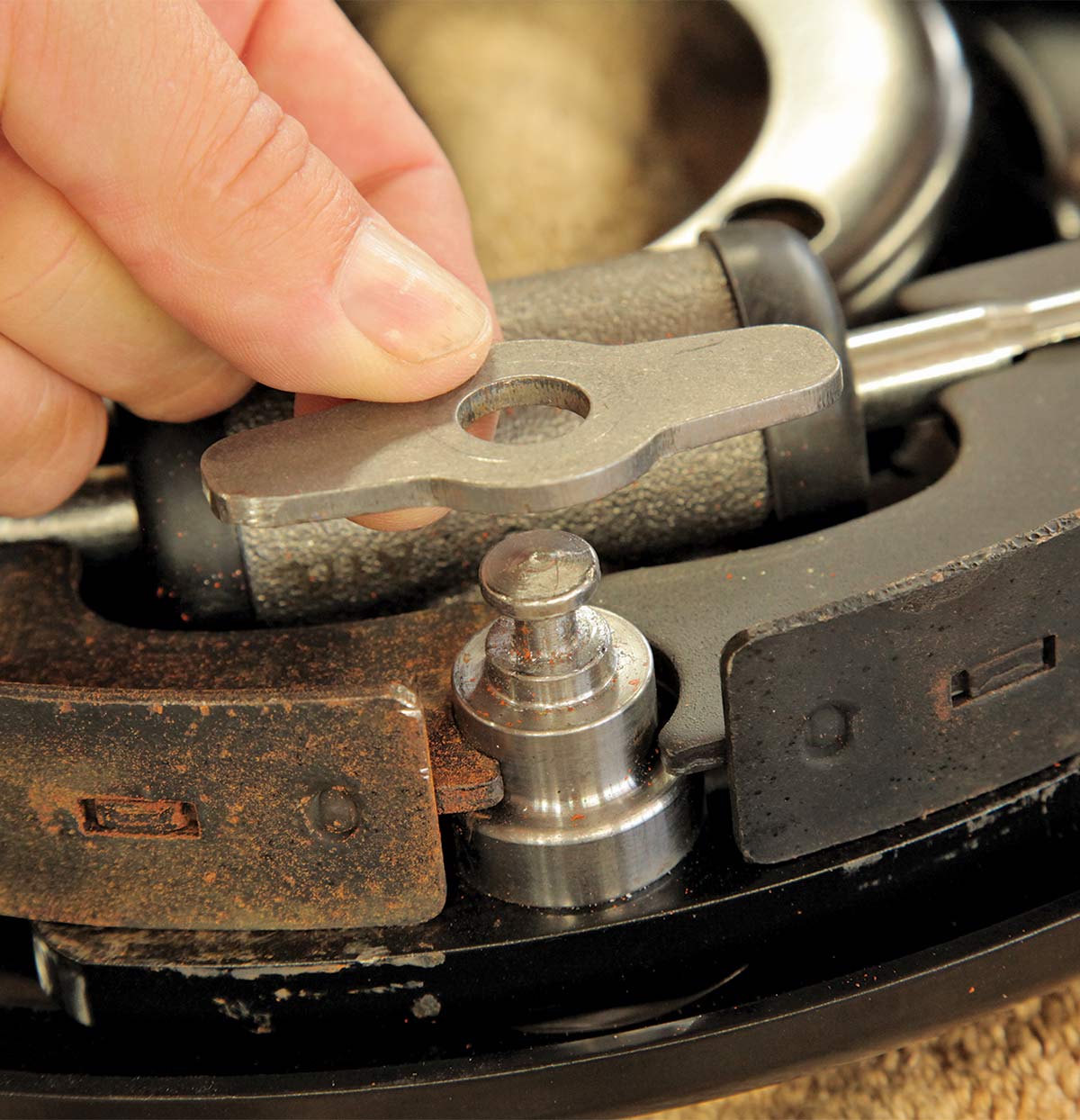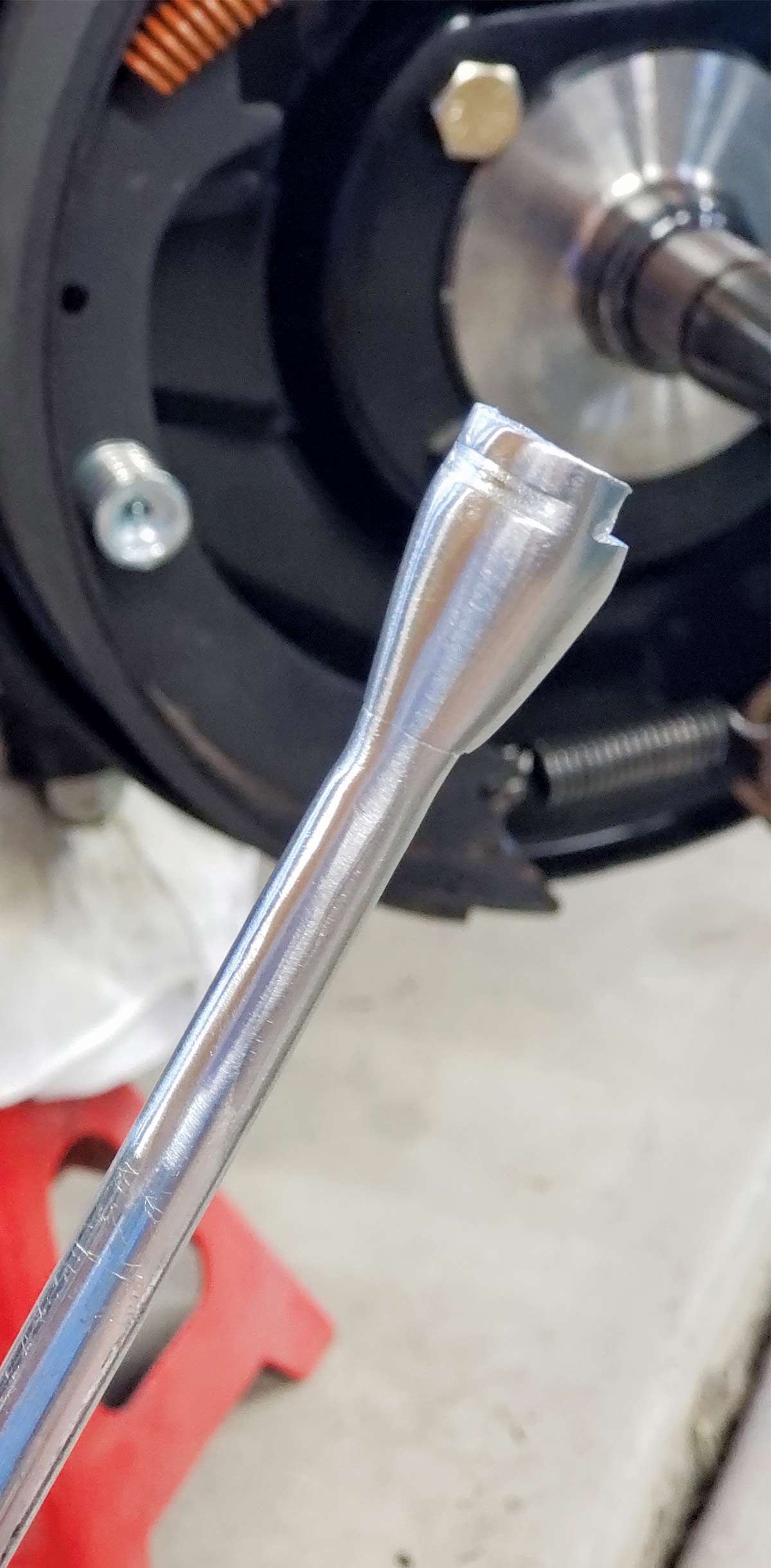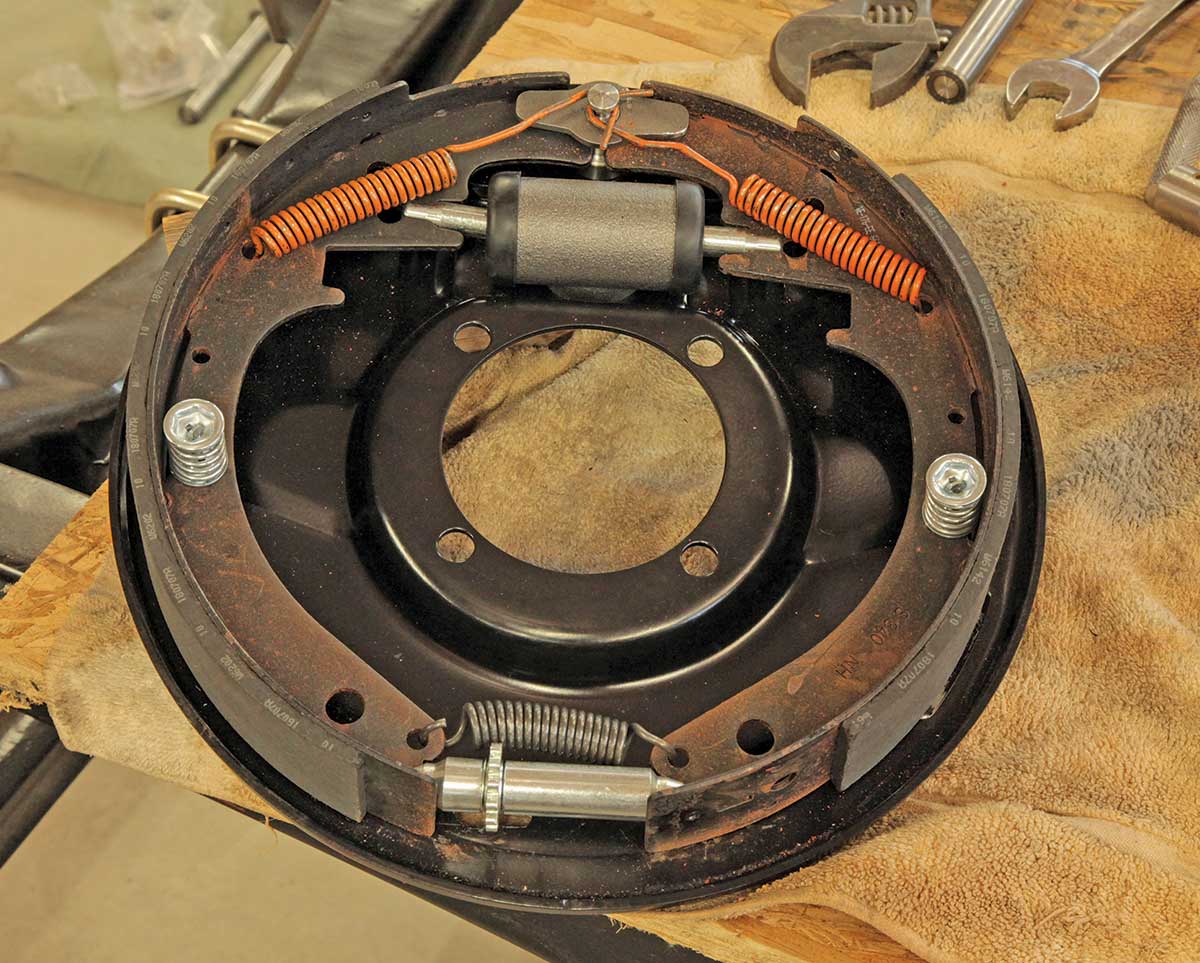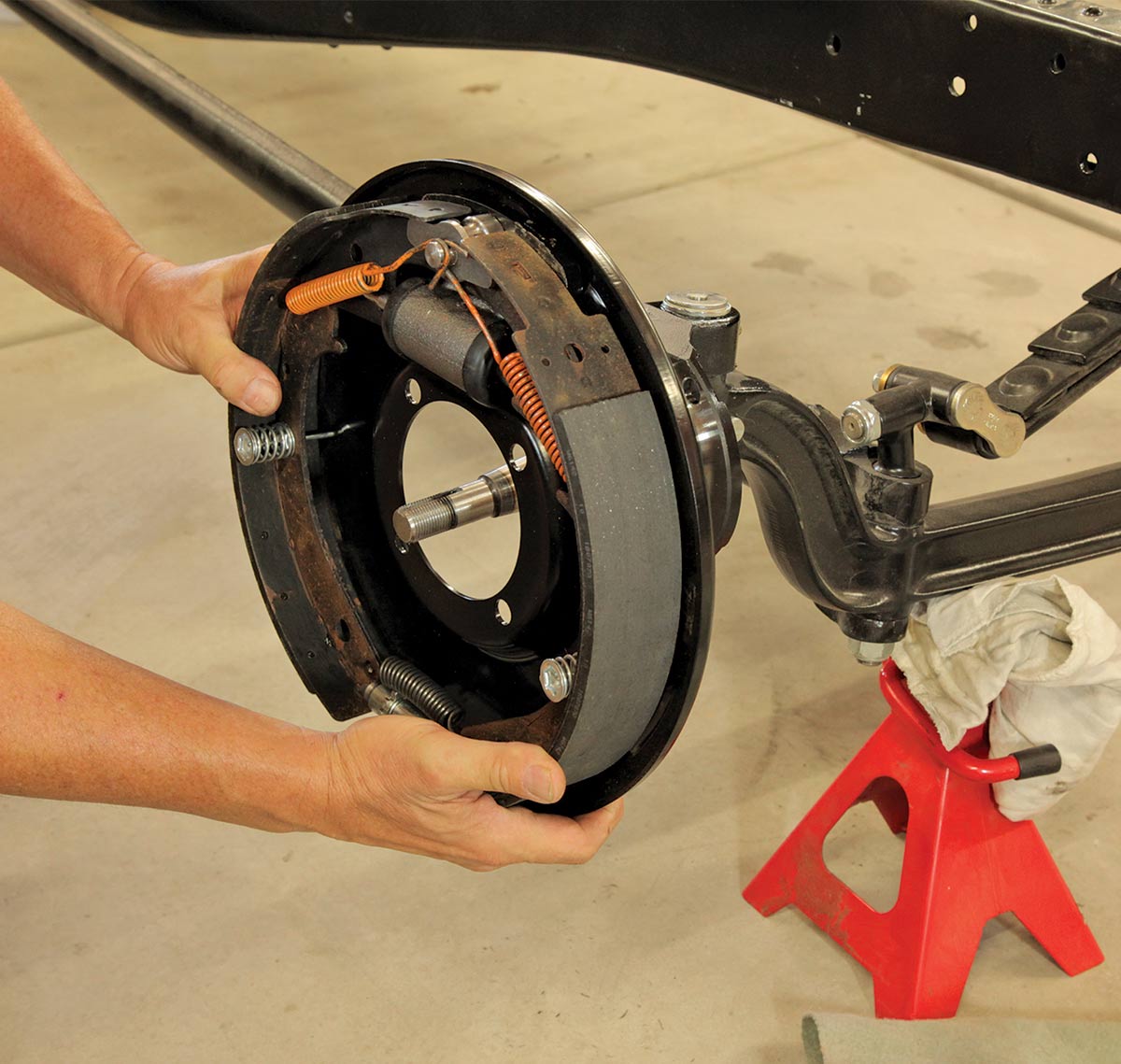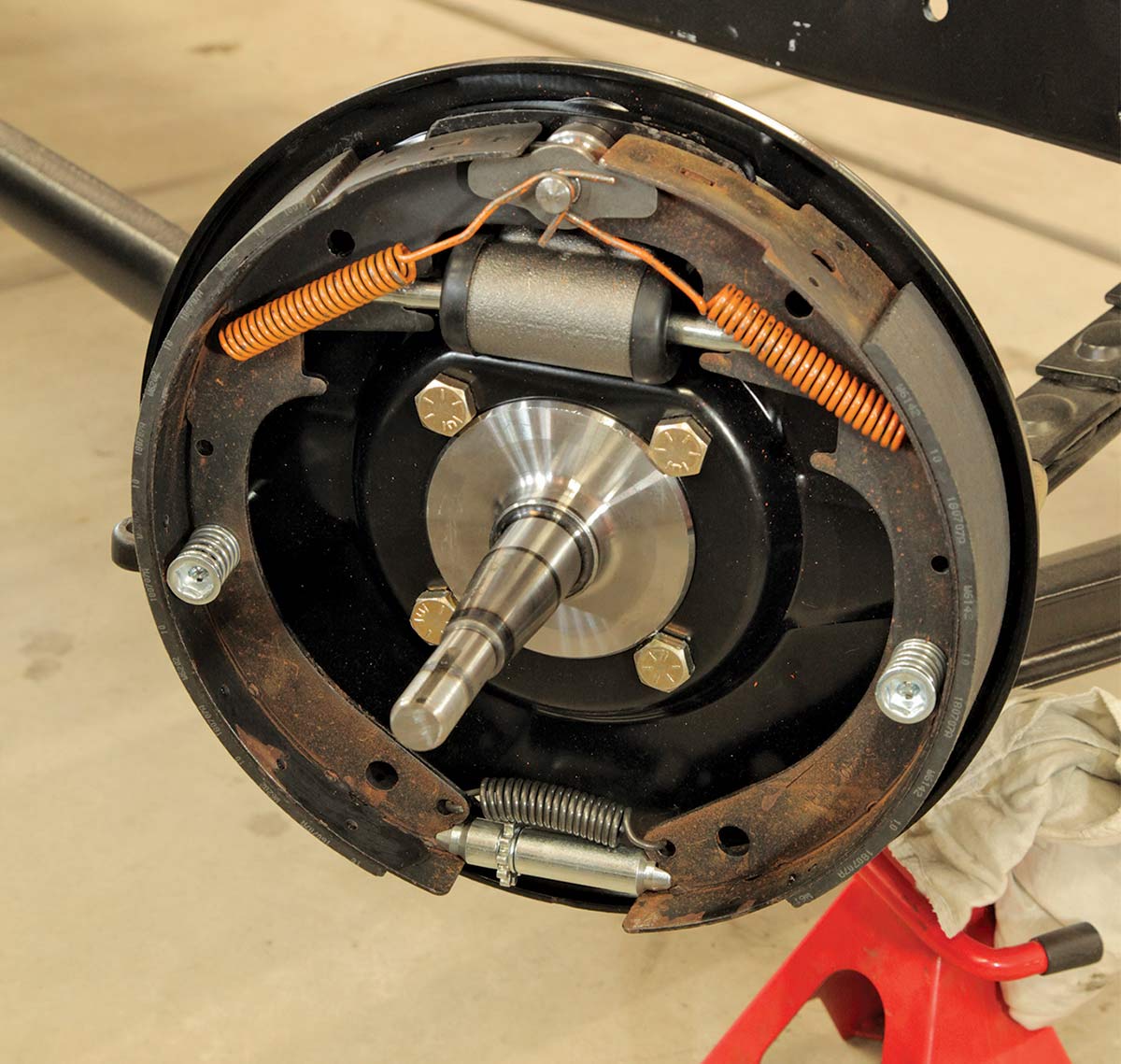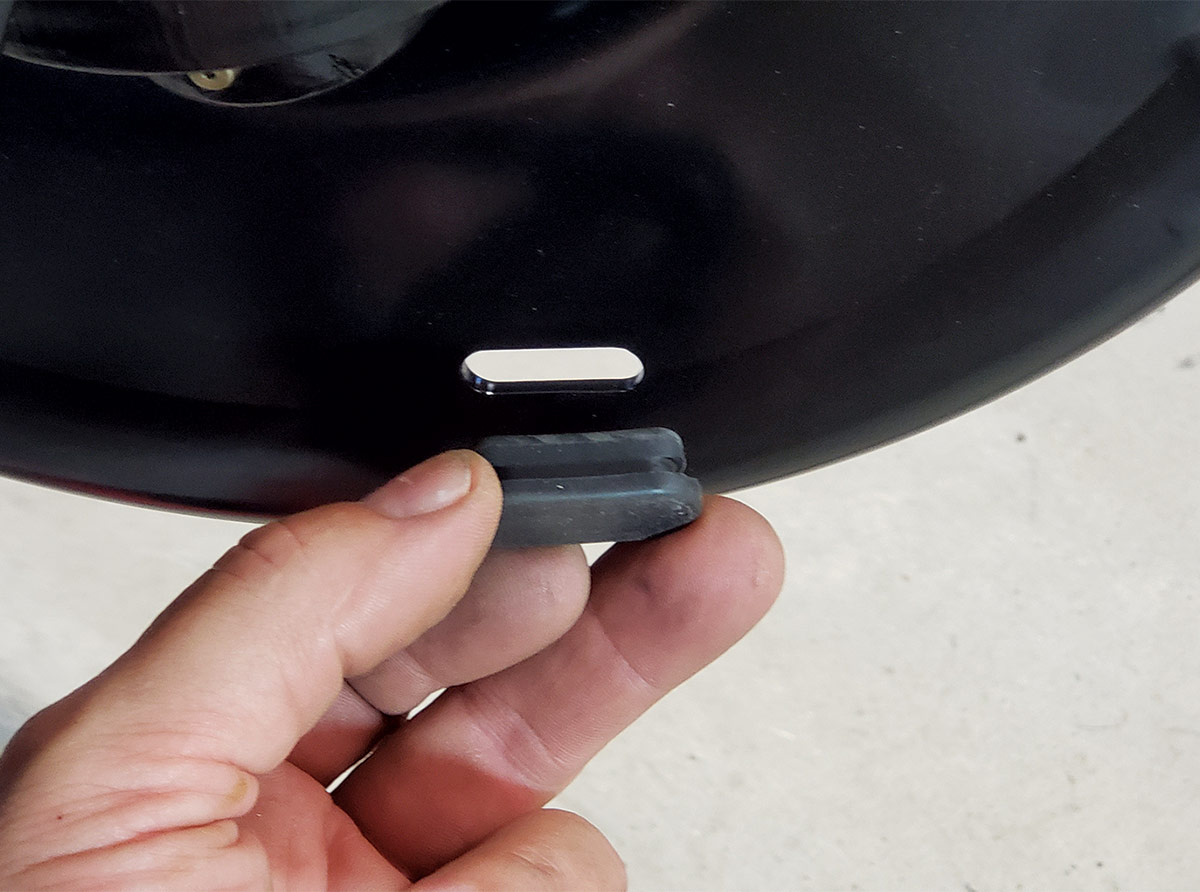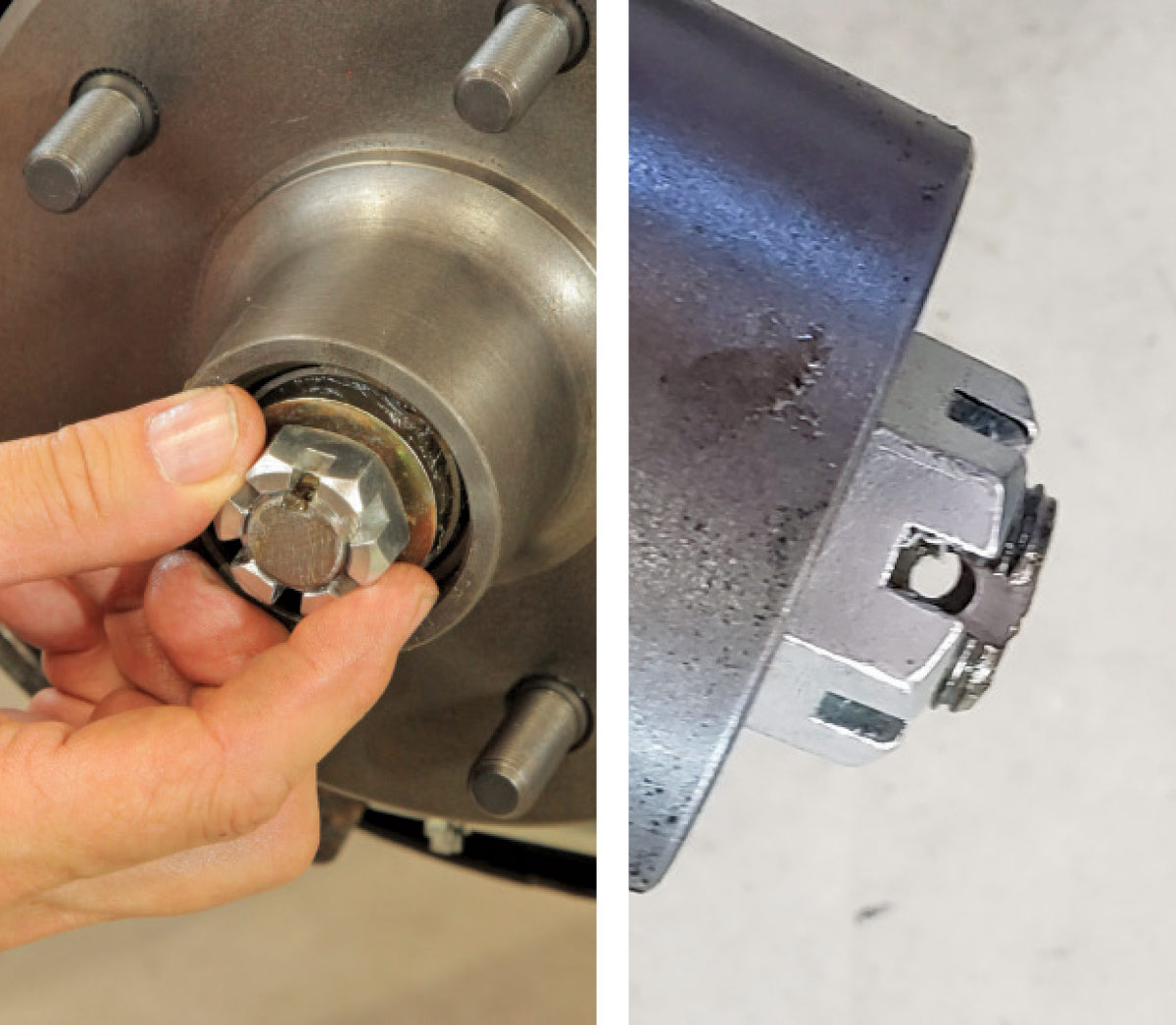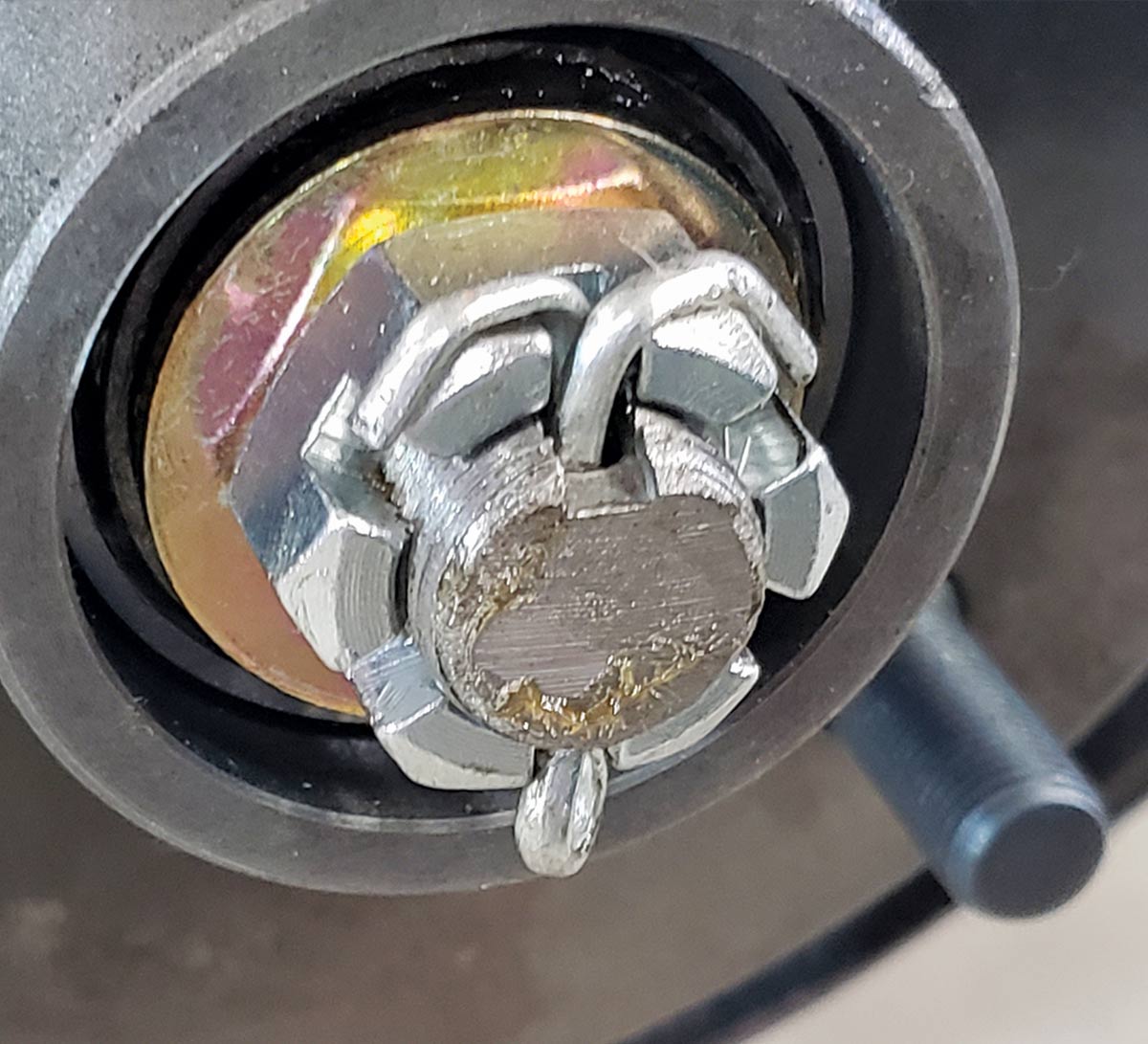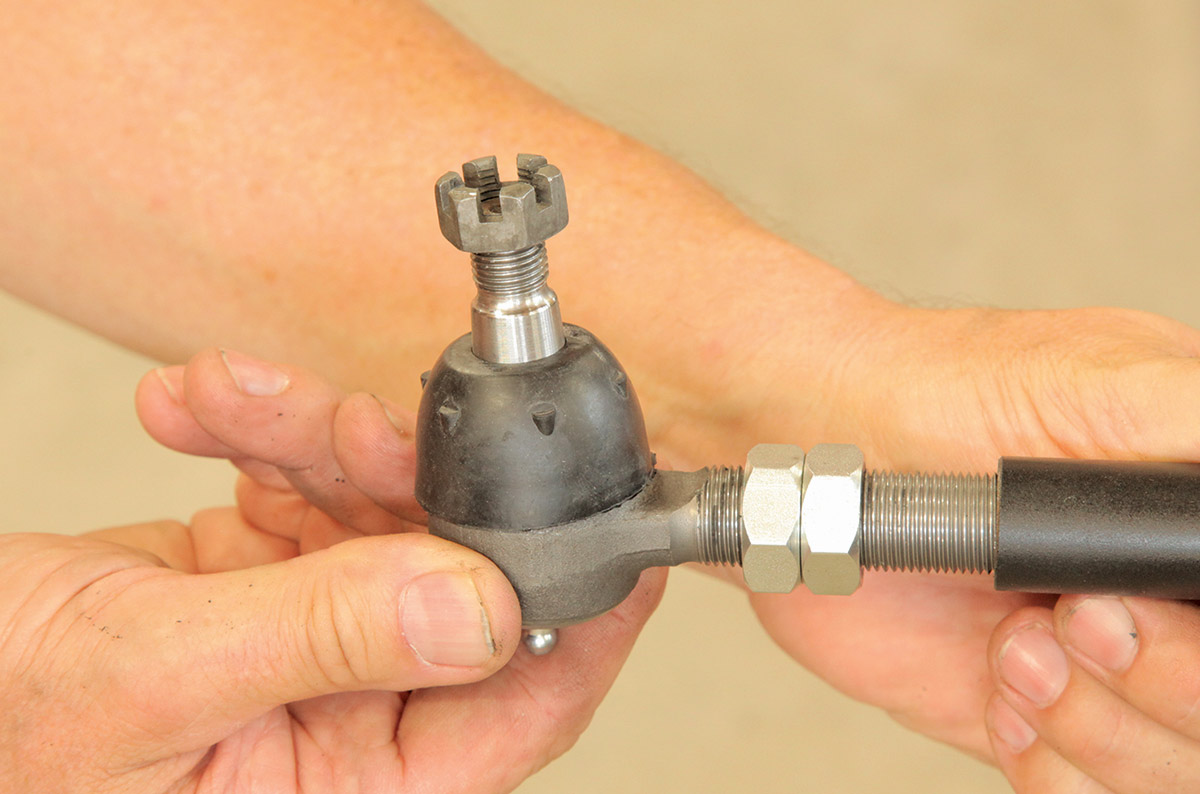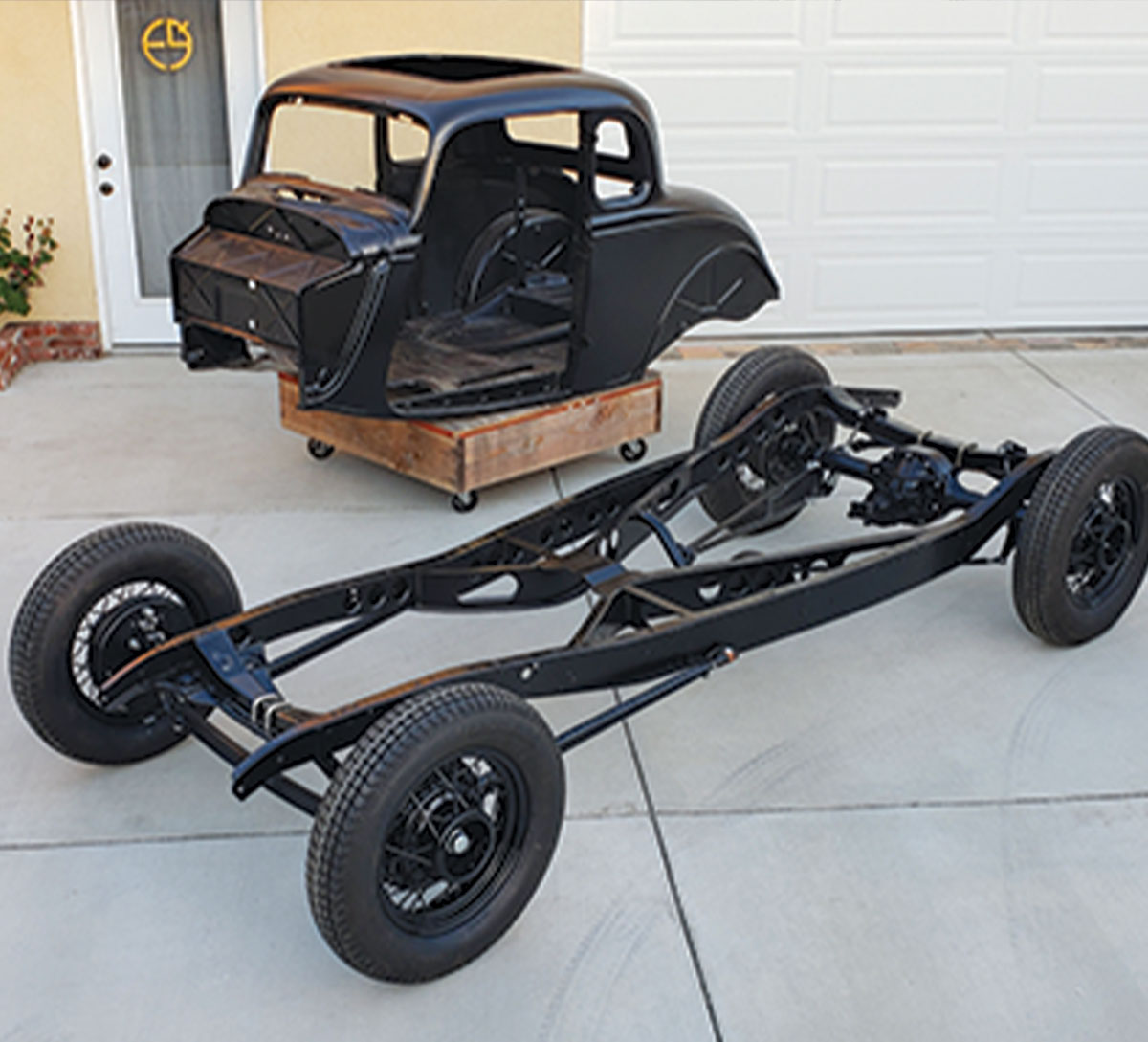
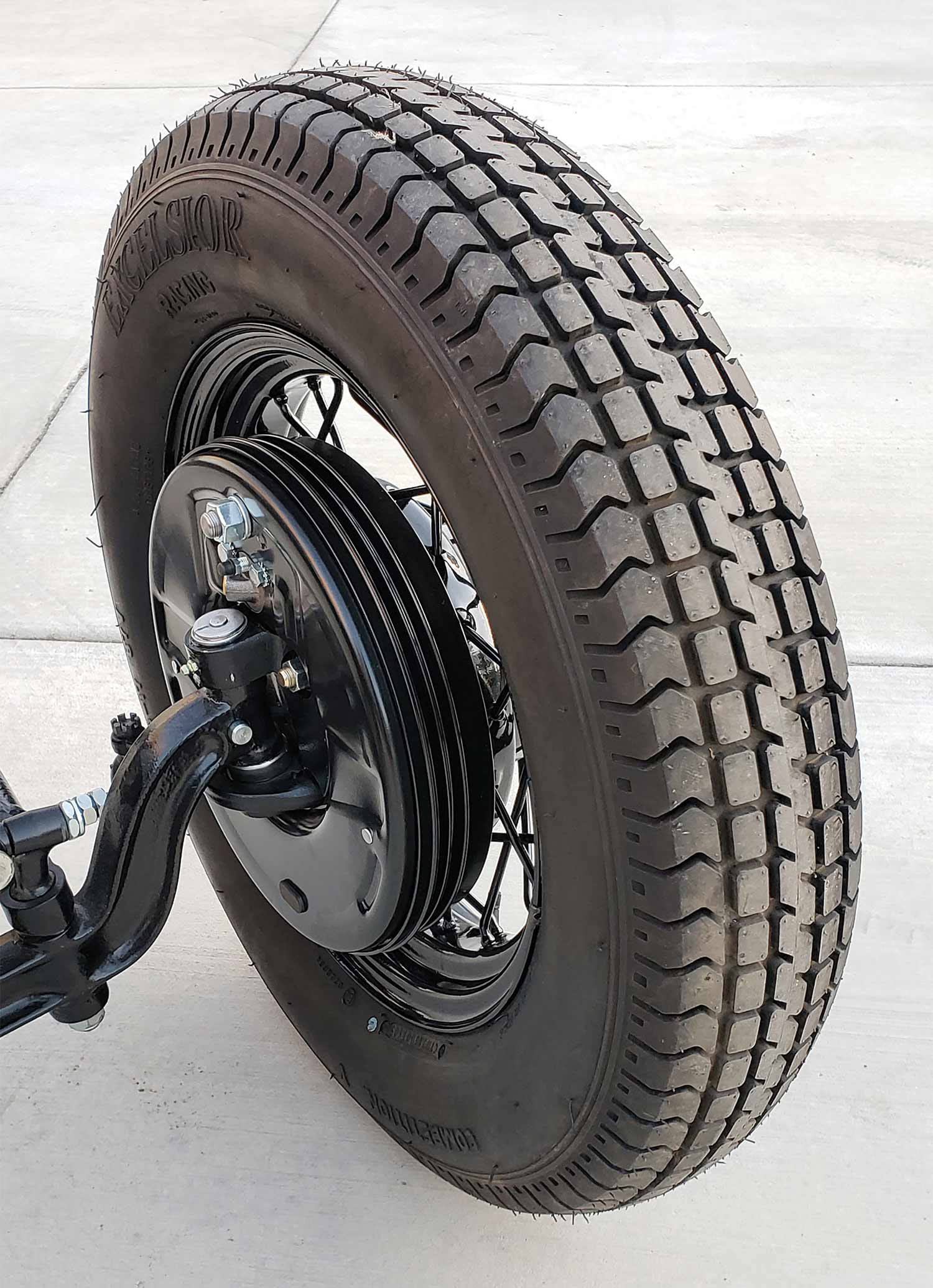
aking stuff work together when it wasn’t originally designed to be is the cornerstone of hot rodding, but doing that is often more than half the challenge. Step in Speedway Motors and their Lincoln front brake kit for early Ford spindles.
For many years, if someone wanted to use 12×2-inch Lincoln drum front brakes (mostly because the brake shoe is 1/4-inch wider) they had to cobble something together, and if you were using 1937 – 1941 Ford spindles (the ones with the round, not square, back) then you had to bust out the heavy grinder and attack the top of the spindle so the Lincoln backing plate would fit flush. Up until just recently, that was how it was done.
Speedway Motors has recently expanded their line of hot rod brake systems and parts to be more friendly to the needs of a traditional hot rodder who wants the vintage look without having to resort to using possibly stressed-out 80-year-old parts. Speedway saw the need for a simpler approach and began manufacturing forged spindles that have that clearance already precision milled into the piece, saving hours of work grinding to achieve the desired result. And they offer several “kits” that group all the needed parts together, making ordering a snap. The only non-Speedway parts used for this build was a pair of Super Bell steering arms from Pete and Jakes.
We found some folks will want to assemble these brake components on the mounted spindle, while others (like us) will do the work on a workbench and then transfer the assembled parts to the spindle. Either way you can now build a vintage hot rod Lincoln drum—based brake system using only brand-new parts, and this is how it’s done.
Speedway Motors
(800) 979-0122
www.SpeedwayMotors.com
Pete and Jakes / Super Bell
(800) 334-7240
www.PeteAndJakes.com


